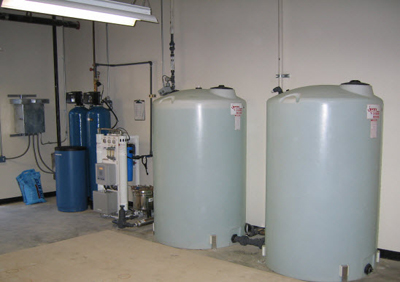
Water Softeners are recognized in different industry sectors for delivering optimum functional support in different industry sectors. Matching up with the demands of providing excellent water purification, these water softening units find usage in ensuring complete removal of calcium ions and magnesium from water that in turn results in removal of water hardness as well as in other water filtration applications in different industry sectors. Here, our expertise also lies in making these available in customized operational specifications as per client's provided treatment. Our designed Water Softening Plant are works on basic principle of reducing the excessive levels of calcium and magnesium ions in water. They are capable to remove total hardness dissolved in Water. Our water softners are well known for various features like low cost, reliable and highly efficient to soften your water. Once water hardness is known, you have two options. You can live with the hardness level, recognizing that levels below 7.0 gpg will probably not cause major scaling and soap film, or treat the water to reduce the calcium and magnesium present. A water softener, also called an ion exchange unit, will effectively accomplish the latter option. Ion Exchange Because water softening devices have long been available in the water treatment industry, the technology is highly developed and in most cases works well to reduce the hardness level. How does ion exchange work? A physical and chemical process filters the water through an exchange media known as resin or zeolite. Typically, the resin is a synthetic or natural, sand-like material coated with positively charged sodium ions. As the calcium and magnesium dissolves into positively charged ions, an ion exchange environment is created. The water flows through the unit while the resin releases its sodium ions and readily trades them for the calcium and magnesium ions. The water flowing out of the device is now considered soft. Regeneration Clearly the resin is not an inexhaustible exchange site. When all the sodium exchange sites are replaced with hardness minerals, the resin is spent and will no longer soften water. At this point, the water softener will need to be run on an alternate cycle called regeneration. During this cycle, resin is backwashed with a salt solution. The brine is reverse flushed through the system taking with it the calcium and magnesium ions that had been adsorbed on the resin. Once backwashing is complete, the softener can be returned to use. Some water softeners will automatically switch to the operation cycle. Others have a manual switch. Figure 1 illustrates both cycles of the water softening process—ion exchange and regeneration.